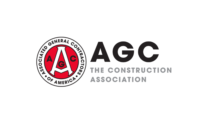Contractors Should Prepare for a Coronavirus-triggered Recession

“The risk of recession over the next three to six months is arguably more elevated than at any period since 2007,” said economist Anirban Basu, noting that the U.S. economy has been defying predictions in an extended period of growth that's seemed too good to be true for some time.
“I knew this period of fragility would leave us susceptible to a trigger,” he told his audience, “but I didn’t know what that trigger would be. Now we know.”
The coronavirus pandemic is that impetus, of course, but it’s more important to look at the playing field that got us here, he said during a session at the Modular Building Institute's World of Modular conference here on Wednesday.
The U.S. economy is strong, said Basu, chairman and CEO of Sage Policy Group and chief economist of the Associated Builders and Contractors conceded, with “plenty of job growth” and incredibly low interest rates. But to an economist, he explained, the market’s current circumstances defy all logic of economic theory, which essentially means it’s “too good to be true.”
First, we have “impossibly low inflation,” he said, paired with “incredibly low interest rates,” plenty of job growth and rising wages. He implored his audience to ask, “how is this possible?”
Using data gathered from his firm, along with standard economic indices, Basu painted the picture of where the market stands. Inflation is at a rate of 1.6% year over year, despite three rate cuts; job growth is up, including with the addition of 223,000 net new jobs for construction alone from February last year until today, which he called a “minor miracle;” global interest rates are at record lows despite debt levels soaring to a record high of $250 trillion in the first half of 2019; and most importantly to the audience, nonresidential construction spending is thriving.
Lodging, for example, is up 60% in terms of spending over the past five years, he said. Office building, a sector to which an audience of modular builders, in particular, matters, he noted, is up 56.5% in that same period. Even amusement and recreation, a market that was heavily impacted by the recession, is up by around 50%.
Meanwhile, Canada’s nonresidential building construction has surged even more in the last 10 years, to $14.8 billion in the fourth quarter of 2019, a 7.3% year-over-year growth.
Beware What Seems too Good to be True
But instead of simply riding that wave of positive momentum, Basu implored the audience to take heed of factors that seem too good to be true, “in the context of the lowest unemployment rate in 50 years, lackluster productivity growth, a robust consumer spending sector and the lengthiest expansion in American history.” With this, he asked, “How can global indebtedness be so high and global interest rates so low?”
Furthermore, he added, “How can the U.S. economy have been performing so well and financial markets booming so splendidly in the context of fragmenting global trade, slower immigration, Brexit, impeachment, global warming and other phenomena that one would think would be bad for domestic economic outcomes?”
Make no mistake, he said, it was a “fantastic decade for the U.S. economy.” From 2009 to 2019, the country’s share of global GDP rose from 23% to 25%, which is remarkable, he said. Yet productivity hasn’t necessarily increased, with a 1.3% average percent change from the prior quarter against annual rate of growth since 2007, compared to 2.1% since the end of World War II.
Unemployment rates are at recent record lows, with around 6.4 million unfilled jobs and only 5.8 million unemployed. Labor is available, he said, but skilled labor is not. “When I talk to people in the construction industry, they don’t tell me they can’t find workers, they tell me they can’t find electricians, HVAC technicians and ... estimators.”
And wages are up, too, due to these factors, which stimulates new building and construction starts. “Great for contractors, right,” he asked rhetorically.
No, because underlying factors driving that growth have been artificial, the economist said, leading to a very healthy-looking but “fragile” economy. “We have not been growing in the right ways. The labor force, for instance, also needs to expand. The right skills need to be learned, for another.”
The Flip Side of Spending: Debt
Borrowing may be one of the most important factors of the equation, he explained. With the momentum we’ve seen, borrowing confidence increases, but with that confidence extending from the consumer to the small business world to the country to the global economic market, “indebtedness causes vulnerability” on that scale.
Federal debt held by the public, for example, represents 80% of GDP and is projected to hit 100% by 2030. As debt increases, equity goes down. And the assets prices, in relation to debt, have seemed "out of whack" since long before the coronavirus hit, he said.
And the impacts of coronavirus, also known as SARS-CoV-2, are no doubt crashing into the momentum the industry and the economy is riding, and because it's been in such a vulnerable, fragile condition, he said, there will be a significant impact.
If it weren't coronavirus, it'd be something else, he posited, but the fact that coronavirus is causing so much uncertainty in a time in which a global economic policy uncertainty index up to highest it's been all century after wavering a bit in a positive direction in recent years after factors such as a U.S. trade deal with China means that the time to face its potential impacts is now.
Though he admitted he could be wrong, and "this may turn out to be merely a soft landing, like in 2016," Basu said it's not unlikely that the circumstances of a vulnerable, fragile economy paired with the pandemic may mean that small businesses start laying off workers, travel will be impacted, more people will miss payments and credit will tighten.
Basu's call to action? "Businesses should be raising cash, determining if their lines of credit are large enough, considering staffing models and ensuring the good graces of bankers and insurers," which is particularly important, he said, for the construction world.
This article was originally published by Construction Dive
Looking for a reprint of this article?
From high-res PDFs to custom plaques, order your copy today!






